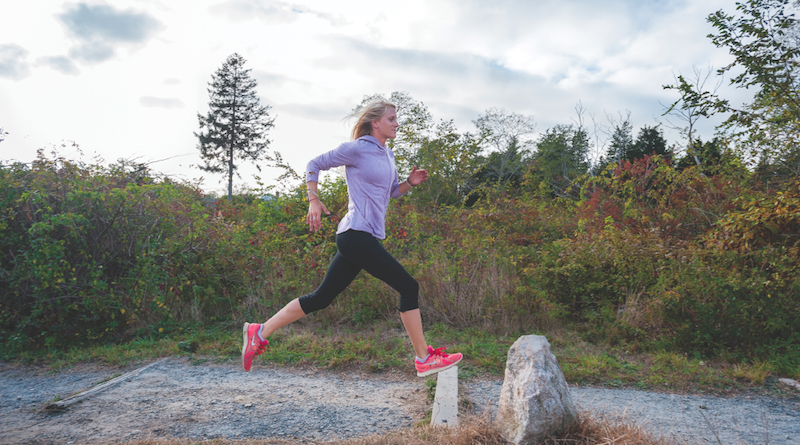Beat Post-Race Soreness
The running season is well under way and many of you have already done the Boston Marathon or the Vermont City Marathon. You no doubt have a little soreness to contend with in terms of quad and calf stiffness. We have all experienced the post-exercise muscle soreness at some point in our running careers. We typically experience it the day after a workout we’re not used to or that was particularly intense or very long. Post-exercise muscle soreness or stiffness is often misunderstood by coaches, athletes, and practitioners. For example, muscle soreness, tenderness, or stiffness following a workout is not a muscle strain or injury per se. While the muscle has indeed been traumatized and individual fibers stretched or micro-torn, it is a relatively quick, self-healing occurrence that also acts as a muscle adaptation stimulus. A strain or pull usually occurs as a result of a direct trauma. It also has nothing to do with lactic acid accumulation which may be the most misunderstood phenomena in all of sports science. Lactic acid does not cause muscle damage.
The stiffness occurs because microtears in individual fibers become inflamed. Not all fibers tear and those that do tear are typically either fast-twitch fibers or fibers that haven’t been recruited for a while. That is why the damage is worse when you do something you haven’t done for a while (think about the legs following the first day of skiing in the winter). Regardless, most athletes will experience some degree of muscle soreness during their pre-season or following a rest or change in routine.
So, the question really is this: Is there anything we can do to alleviate the soreness? Numerous mechanisms have been tried and proposed including stretching, anti-inflammatories, massage, antioxidant supplements, ultrasound, ice, compression, sauna, Jacuzzi, etc. The results are fairly uniform in that there is not a really effective treatment. This is not meant to devalue the importance of stretching or other commonly practiced routines. It is merely an opportunity for us to evaluate the efficacy of selected treatments.
The idea of stretching is particularly interesting since it is firmly believed to aid in injury prevention, reduce lactate accumulation, and prevent this soreness. Certainly discrepancies exist between studies. However, research has demonstrated less tenderness, less strength loss, and greater range of motion in subjects who underwent a pre-exercise warm up of stretching and a massage within 15 minutes after exercise. Other authors have also supported an effect of pre-stretching. In related work, our lab here at UVM has also shown greater damage in the muscles of subjects who are inherently less flexible, which means not that stretching per se plays a role, but that a lack of overall flexibility does. As a treatment, a combination of compression and cryotherapy does appear to have some efficacy, especially when used together. However, I should mention that in these studies ice and compression were typically applied 15 minutes post-exercise and then routinely for three to four days. In contrast, ice massage was ineffective. Selected anti-inflammatory drugs have also been shown effective. Non-steroidal anti-inflammatory drugs such as Ketoprofen and diclofena have been effective in reducing inflammation. Others such as aspirin and naproxen have shown little effect.
There is some suggestive evidence that antioxidants, such as vitamins E and C, may have an inhibitory effect on the development of muscle soreness. The role of anti-inflammatories and antioxidants are particularly interesting. We tested an all-natural product a few years ago made from tart cherries that was effective in both the treatment and prevention of the damage caused by strenuous exercise. This product is now available as a natural, no-additives recovery drink at www.cherrypharm.com. The efficacy of the drink is somewhat unclear, but the data points to the high concentrations of naturally occurring anti-inflammatories and antioxidants.
The most overlooked intervention to prevent this type of muscle damage is prior exposure to the exercise mode and intensity. That basically means you have to consider the exercise both in terms of movement patterns and intensity. One problem is that we can’t always reproduce the intensity. For example, you don’t exactly run a marathon before you run the marathon. The damage that is caused by running a marathon is a combination of two things. One is the mechanical trauma from the overload and the second is the depletion of energy stores. So, while you may be well prepared from a movement pattern point of view, you probably will experience energy depletion to a point that muscle fibers are damaged. In this case there is nothing preventative to do.
In general, while multiple practices exist for both treatment and prevention, it appears that the basic approach of prior exposure and prestretching beforehand, followed by cryotherapy and compression after the event, may be the simplest and most effective approach. The other alternatives are to look at the recovery drinks that are available. The problem is that the athlete rarely feels any symptoms for 24 hours and immediate treatment post-exercise is a factor. So, when you partake of an unaccustomed exercise bout and you anticipate soreness, start with a long stretch and head for an ice cold bath or wrap immediately following. Alternatively, if you have taken some time off from training, the first few sessions back should be very very light and although you will probably experience the soreness, it will be much less.

